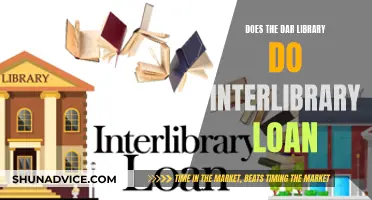
The Home Affordable Refinance Program (HARP) was a federal program set up by the Federal Housing Finance Agency in 2009 to help underwater and near-underwater US homeowners refinance their mortgages. The program ended in 2018, but similar federal mortgage-refinancing programs continue to offer its benefits. HARP was designed to help those who were unable to refinance due to dropping home prices in the wake of the US housing market correction. While it is unclear whether Tennessee has a state-specific HARP program, the federal program was available across the US, and so was likely available in Tennessee.
| Characteristics | Values |
|---|---|
| Location | Tennessee |
| Program Name | Home Affordable Refinance Program (HARP) |
| Other Names | HARP 2.0, HARP 3.0, DU Refi Plus, Obama Refinance Program, #MyRefi |
| Administering Body | Federal Housing Finance Agency (FHFA) |
| Date Introduced | March 2009 |
| Date Ended | 31 December 2018 |
| Eligibility | Homeowners with a loan-to-value ratio (LTV) exceeding 80% |
| Homeowners with no more than one late payment in the last 12 months | |
| Homeowners whose loan is owned or guaranteed by Freddie Mac or Fannie Mae | |
| Purpose | To help underwater and near-underwater homeowners refinance their mortgages |
| To enable homeowners to secure better mortgage terms | |
| To prevent foreclosure |
What You'll Learn

HARP eligibility requirements
The Home Affordable Refinance Program (HARP) is a federal program set up by the Federal Housing Finance Agency in March 2009 to help underwater and near-underwater homeowners refinance their mortgages. The program ended on December 31, 2018. However, its replacement, the Streamline Refinance program, is still available.
To be eligible for a HARP loan, you must meet the following requirements:
- Your mortgage must be owned or guaranteed by Freddie Mac or Fannie Mae.
- Your loan must have been acquired by Freddie Mac or Fannie Mae on or before May 31, 2009.
- You must be current on your mortgage payments, with no late payments in the last six months and no more than one late payment in the last twelve months.
- Your current loan-to-value (LTV) ratio must be more than 80%.
- You must benefit from the loan by either lower monthly payments or movement to a more stable loan product.
- You must not have had a previous HARP refinance of the mortgage, unless it is a Fannie Mae loan that was refinanced under HARP during March–May 2009.
Additionally, it is important to note that not all lenders participate in the HARP program, and there may be additional criteria imposed by the mortgage servicer. Therefore, it is recommended to shop around for a lender that participates in the program and can meet your specific needs.
Target Employee Loans: What's the Deal?
You may want to see also

HARP refinance options
The Home Affordable Refinance Program (HARP) was a government-backed program that allowed homeowners with little to no equity to refinance their mortgages at more competitive interest rates. The program was designed to help underwater homeowners, or those whose mortgages were worth more than their homes, to secure better terms and rates. HARP was a part of the Obama Administration's #MyRefi Plan.
HARP was created in the wake of the housing crisis, with over 3.4 million borrowers assisted before the program expired on December 31, 2018. The Federal Housing Finance Agency (FHFA) and the Treasury Department originally estimated that four to five million borrowers would be able to refinance under HARP.
To be eligible for a HARP loan, you must have:
- Made on-time payments
- No over-30-days-late payments in the last six months, and no more than one in the last 12 months
- A loan owned by Fannie Mae or Freddie Mac
- A loan originated on or before May 31, 2009
- A current loan-to-value (LTV) ratio of more than 80%
Since the HARP program expired, other programs have been created to help homeowners refinance with little or no equity. These include:
- The Freddie Mac Enhanced Relief Refinance (FMERR)
- The Fannie Mae High LTV Refinance Option (HIRO)
- The Streamline Refinance for FHA, VA, and USDA loans
Teamsters Union: Unsecured Loans Available?
You may want to see also

HARP 2.0
The Home Affordable Refinance Program (HARP) is a federal program of the United States, set up by the Federal Housing Finance Agency in March 2009. It aims to help underwater and near-underwater homeowners refinance their mortgages. HARP 2.0 was introduced in December 2011 to address specific challenges faced by homeowners seeking to refinance their mortgages.
To be eligible for HARP 2.0, borrowers must meet specific criteria. They must be current on their mortgage payments, with no late payments in the last six months and no more than one late payment in the last twelve months. The loan must be owned or guaranteed by Freddie Mac or Fannie Mae, and the current loan-to-value (LTV) ratio must be greater than 80%. Borrowers with a high mortgage interest rate between 6% and 8% stand to gain the most from a HARP refinance.
While HARP 2.0 does not require an appraisal or employment history, credit scores are a factor. A higher credit score may be necessary to achieve a significantly lower interest rate, and the borrower may need to pay closing costs, which can be rolled into the new mortgage.
Loans and Unemployment: Impact and Influence Explored
You may want to see also

HARP replacement programs
The Home Affordable Refinance Program (HARP) was a federal program in the United States that helped homeowners with little or no equity to refinance their mortgages. The program was created in 2009 in the wake of the 2008 financial crisis and offered assistance to homeowners who were unable to qualify for traditional refinance programs due to falling property values and missed mortgage payments. HARP was designed for underwater homeowners, meaning those who owed more on their mortgage loans than their homes were worth.
HARP ended in 2017 or 2018, depending on the source. However, there are still options for homeowners who have negative equity in their homes and need to refinance. Here are some HARP replacement programs:
- Freddie Mac Enhanced Relief Refinance: This program helps homeowners with little or no equity to refinance their mortgages. It is similar to HARP in that it offers assistance to underwater homeowners. However, it is important to note that this program was put on hold in August 2021 due to a low number of applicants.
- Fannie Mae HIRO: This program is also designed to help homeowners with little or no equity to refinance. It was also put on hold in August 2021 for the same reason as Freddie Mac's program.
- Streamline Refinance for FHA, VA, and USDA loans: This program started concurrently with HARP in 2017 and does not require an appraisal to be eligible.
- Flex Modification Program: This program helps homeowners who are struggling to pay their mortgages by allowing them to change their loan terms.
It is important to note that these replacement programs have specific eligibility requirements, such as having a loan-to-value ratio above 97% and demonstrating a "net tangible benefit" from the refinance. Additionally, if you already have private mortgage insurance, it must be transferred to the new loan.
Understanding Loans: Impact on Assets and Liabilities
You may want to see also

HARP lenders in Tennessee
Home Affordable Refinance Program (HARP) was part of the Obama Administration's #MyRefi Plan to help underwater homeowners, i.e., those whose mortgage is worth more than their home, refinance into a lower rate or better loan term to save on monthly mortgage payments and to prevent foreclosure. HARP 2.0, HARP 3.0, DU Refi Plus, or the Obama Refinance Program #MyRefi, allowed homeowners to refinance their mortgage when the value of their home had declined, making traditional refinancing no longer an option.
To be eligible for a HARP loan, you must be current on your home loan. This means you have not had any over-30-day-late payments in the last six months and no more than one in the last 12 months. Your home must be your primary residence, a 1-unit second home, or a 1- to 4-unit investment property. Your loan must be owned by Fannie Mae or Freddie Mac and originated on or before May 31, 2009. Your current loan-to-value (LTV) ratio must be more than 80%.
Borrowers who have a large mortgage with an interest rate between 6 and 8 percent will have the most to gain from a HARP refinance. You will need to pay closing costs, but you can roll these costs into your new mortgage. The cost of the refinance will vary by lender, so it is important to compare closing costs and rates to get the best deal.
Teach for America: Loan Forgiveness and You
You may want to see also
Frequently asked questions
HARP stands for Home Affordable Refinance Program. It is a federal program set up by the Federal Housing Finance Agency in 2009 to help underwater and near-underwater homeowners refinance their mortgages.
To be eligible for a HARP loan, you must be current with your payments, with no 30-day delinquencies in the past six months and no more than one 30-day delinquency in the past 12 months. The loan must have closed on or before May 31, 2009, and the LTV (loan-to-value) ratio must be greater than 80%.
Yes, Tennessee does have HARP loans. Chattanooga, Tennessee, has HARP refinance lenders to help underwater homeowners lower interest rates.
You can apply for a HARP loan through any participating mortgage lender. You can check if your loan is owned or guaranteed by Freddie Mac or Fannie Mae by visiting their websites.







